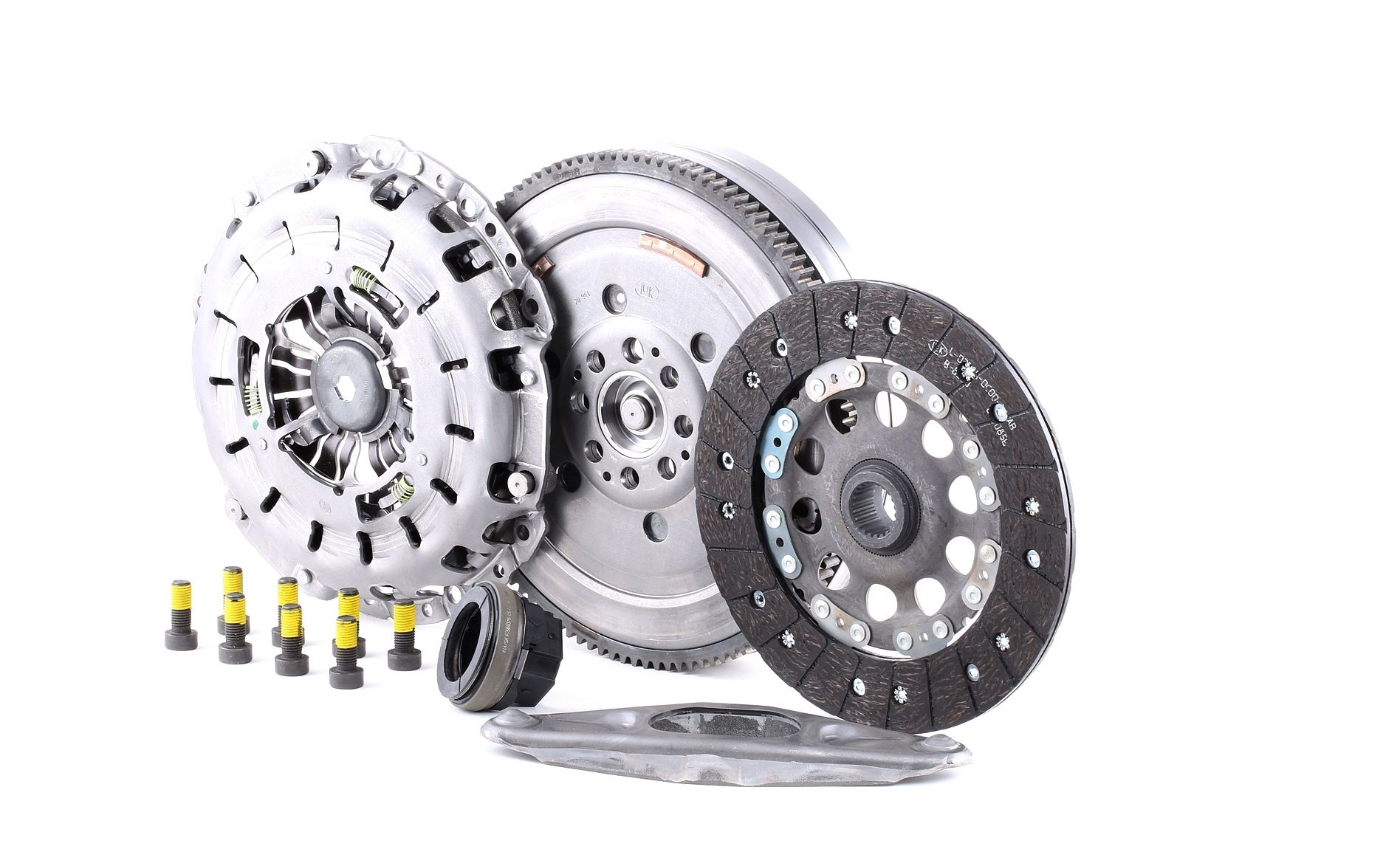Table of Contents
Common problems after clutch replacement: what to look out for
Following a replacement clutch, it is not uncommon to experience issues such as slippage, difficulty shifting gears, and atypical noises.
It is important to keep an eye out for signs of clutch problems after replacement to prevent further damage and ensure optimal functionality of your vehicle's clutch system parts. Make sure you address issues such as difficulty shifting gears, a vibrating pedal, clutch slippage, or unusual noises that can result in more severe problems, possibly necessitating costly repairs. If you deal with these issues straight away, you can stop the transmission from wearing out, keep your vehicle running smoothly and efficiently, and make your clutch components last longer.
What to expect after clutch replacement
After installing a new car clutch kit, you can expect smoother gear changes, improved pedal feel, and the elimination of clutch system noises or slipping.

Replacing the clutch can greatly enhance your vehicle's performance and lifespan. The new part will enable smoother and more efficient gear changes, improving the vehicle's responsiveness. Moreover, changing a worn clutch can prevent further damage to the transmission system, thereby avoiding costly repairs in the future. It also improves safety, as a reliable component reduces the risk of unexpected failure that could lead to an accident. Ultimately, investing in a replacement will preserve the optimal functionality of your vehicle and contribute to a safer, more reliable, and pleasant driving experience.
Problems after clutch replacement
After the clutch has been replaced, slipping, hard shifting, clutch pedal problems, noise and vibration may occur caused by incorrect installation or faulty components. Here are some of the problems that can occur after a clutch change:
- Slipping clutch: The clutch does not fully engage, causing a loss of power and increased engine RPM.
- Difficulty shifting: Difficulty engaging or shifting gears, especially first or reverse, which may indicate improper clutch operation or hydraulic system issues.
- Hard or sticking clutch pedal: The clutch pedal does not return to its original position, or it feels stiffer than usual, making it difficult to depress.
- Noise: Unusual noises such as grinding, squeaking, or rattling from the clutch area when the pedal is depressed or released are an indication of possible installation problems or worn components.
- Vibration or shuddering: The vehicle shakes or vibrates when the clutch is engaged or while driving, especially at low speeds, which may be due to misalignment or improper installation.
What to do after clutch replacement
After changing the clutch, do a test drive, monitor for leaks, adjust the clutch pedal, and check for any atypical noises or vibrations.
Follow these steps to ensure the longevity and performance of your car's clutch after it has been replaced. First, take a gentle test drive to confirm smooth gear changes and clutch engagement. Listen for unusual noises, like grinding or squealing, which might indicate improper installation. Check the clutch pedal feel; it shouldn't be too hard or stiff. Also, make sure that the clutch pedal is correctly adjusted and that there are no leaks from the hydraulic system. Remember to recheck all bolts and fittings for tightness after your test drive.
Sold by AUTODOC Sold by AUTODOC Sold by AUTODOC Sold by AUTODOC Sold by AUTODOC 

 LuK Clutch kit
with pilot bearing, with clutch release bearing, with release fork, with flywheel, with screw set, Requires special tools for mounting, with automatic adjustment
LuK Clutch kit
with pilot bearing, with clutch release bearing, with release fork, with flywheel, with screw set, Requires special tools for mounting, with automatic adjustment

 LuK Clutch kit
with central slave cylinder, with flywheel, with screw set, with automatic adjustment
LuK Clutch kit
with central slave cylinder, with flywheel, with screw set, with automatic adjustment
Signs your clutch is going
Slipping gears, difficulty shifting, a spongy pedal and unusual noises during operation are all signs that your clutch is going.
When your clutch is worn, several symptoms can significantly affect your driving. Slipping, where the car loses power or fails to maintain speed despite the engine revving, is an early sign because the clutch can't grip the gearbox firmly. Difficulty changing gears, often with a grinding sensation or burning smell, is another common indicator.
A spongy pedal that feels softer or more resistant also suggests faulty clutch engagement. Grinding, squeaking, or chirping noises when the clutch is engaged can signal worn or damaged components. Taken together, these symptoms indicate a failing clutch that needs your attention to prevent transmission damage.
How to tell if the clutch is going
Look for slipping gears, hard shifts, a spongy pedal and strange noises to tell if your clutch is going.
A slipping clutch feels like increased engine revs without matching acceleration. Gear changes become difficult, often with grinding noises. You might smell burning, and the clutch pedal might feel spongy or have reduced travel. Additionally, unusual noises like squeaking or chirping when the clutch is engaged can signal serious wear.

FAQ
How long does a new clutch take to settle?
A new clutch typically takes about 500 to miles to fully settle. During this time, you should drive gently to ensure a proper break-in.
What happens if the clutch is not installed properly?
If the clutch is not installed properly, it can lead to slipping, difficulty in shifting gears, premature wear, and potential damage to the transmission system.
How can you tell if your clutch needs replacing?
Signs that your clutch may need replacing include a slipping clutch pedal, difficulty shifting gears, strange noises when pressing the clutch, or a burning smell.
How often should a clutch be replaced?
A clutch typically lasts between 60,000 to 80,000 miles, but this can vary based on driving habits and conditions.
Top products related to this topic:
















